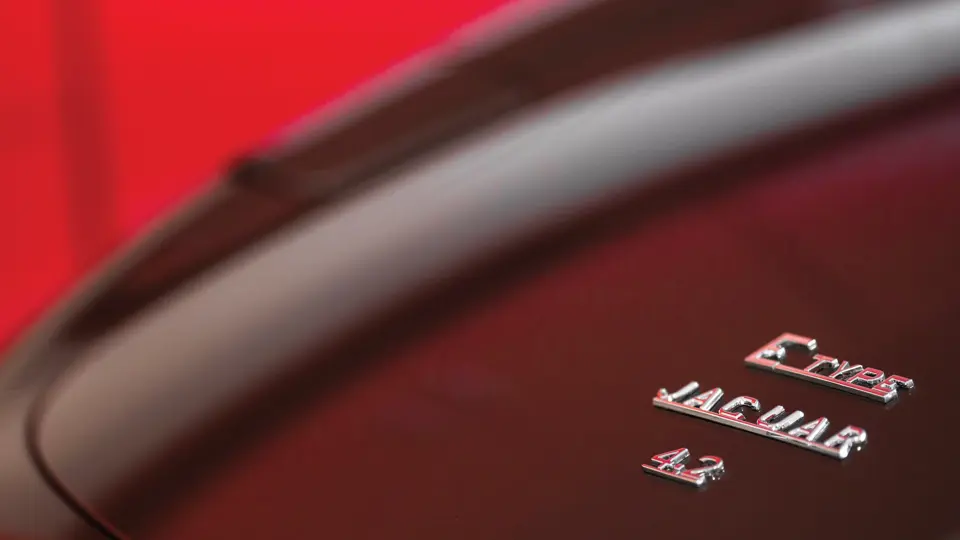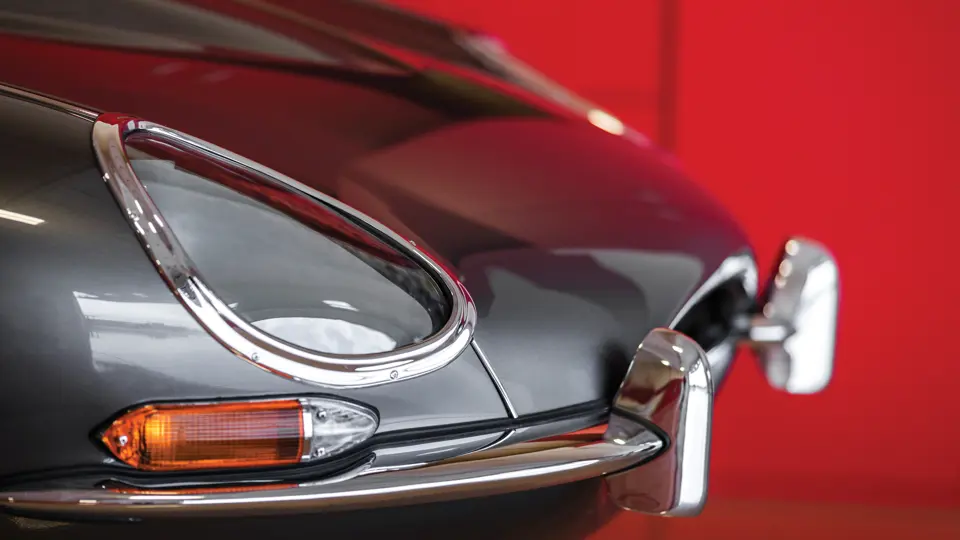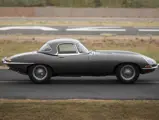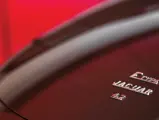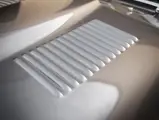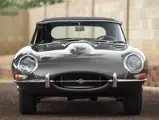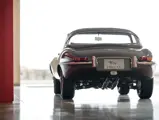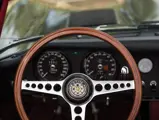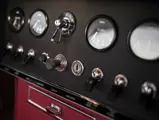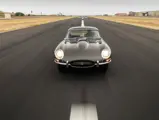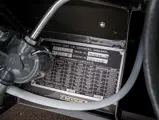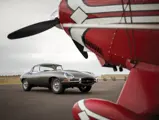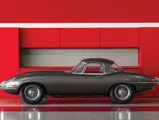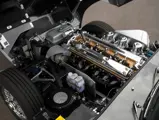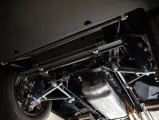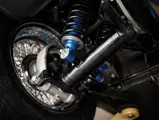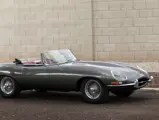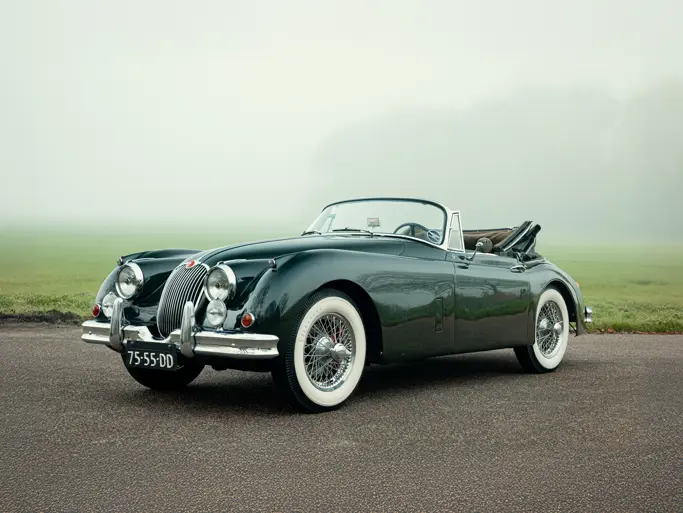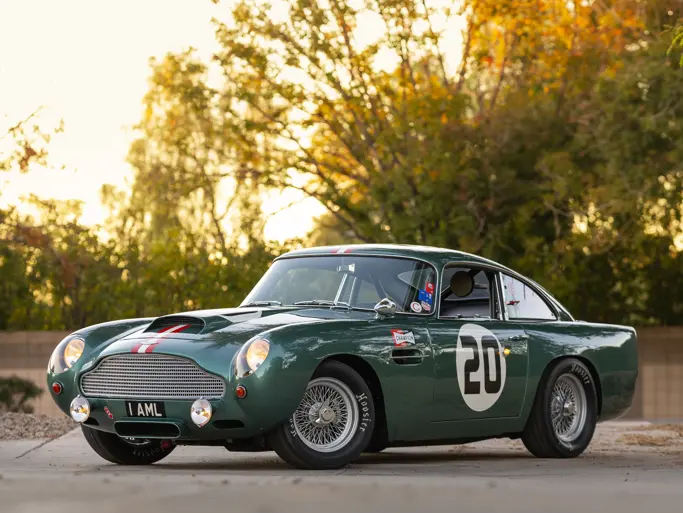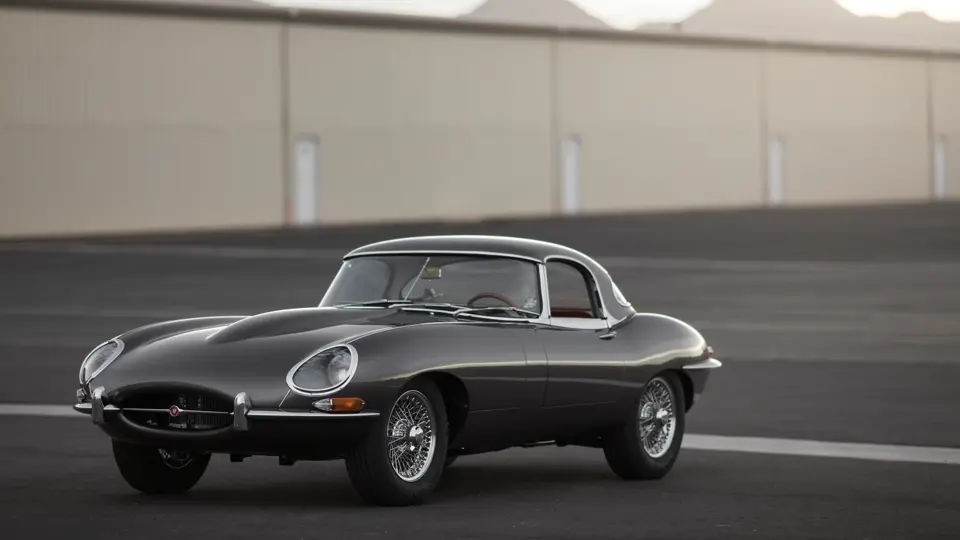
1965 Jaguar E-Type Series 1 4.2-Litre Roadster
{{lr.item.text}}
$297,000 USD | Sold
{{bidding.lot.reserveStatusFormatted}}
- Inarguably one of the all-time greatest automotive designs
- Fresh concours restoration by marque specialists
- Numbers-matching example throughout
- Documented by its JDHT certificate
265 bhp, 4,235 cc DOHC inline six-cylinder engine with triple SU carburetors, four-speed manual transmission, independent front suspension with transverse wishbones, torsion bars, telescopic shocks, and an anti-roll bar, independent rear suspension with lower transverse tubular links and twin coil springs, and four-wheel Dunlop twin-circuit hydraulic disc brakes. Wheelbase: 96 in.
THE MUSEUM OF MODERN ART
“The body’s subtle, swelling curves and depressions reflect carefully calculated geometries based on the ellipse. The most prominent feature—the long, projecting hood—is modeled with a distinctive ‘power bulge’ that runs down the hood’s center to accommodate the powerful engine. Louvered air-intake panels penetrate the otherwise smooth surface. The hood curves down to a grille-less nose that sucks in air to cool the engine. The gently swelling fenders terminate in glass cowl headlights that are seamlessly encapsulated into the body. The view of the car’s contours is as compelling to the driver as to the passerby.”
These are the words that the Museum of Modern Art in New York City uses to describe one of its larger acquisitions. The sculpture is described as having a “steel body: 47" x 64½" x 147½".” It is a Jaguar E-Type Roadster that has been credited to Sir William Lyons, Malcolm Sayer, and William M. Heynes. No one can deny that their magnum opus, this car, has not sunk as indelibly as the most famous of paintings into the world’s consciousness. The E-Type is, quite simply, one of the most famous and instantly recognizable mechanical shapes ever created, and that is its power.
The design of the car was birthed from the D-Type, a full-out racing car with sensuously curved aerodynamic styling that had achieved tremendous success in international competition. The famous, feline curves were developed by Sayer, a trained aerodynamicist, using wind-tunnel testing and aircraft principles. They were constructed around a lightweight monocoque that had a tubular sub-frame to carry the engine, front suspension and steering, and an independent rear axle.
While the design would evolve over its 13 years of production, it never ceased being as beautiful as when it was first created. It says so much that, when RM Sotheby’s gathered together a diverse symposium of the world’s foremost automobile collectors here in New York in 2013, the group’s members had one thing in common: they all owned E-Types.
THIS JAGUAR E-TYPE
The car offered here is a later-production Series 1 example, chassis number 1E 10804. Manufactured in March 1965, its all-important Jaguar Daimler Heritage Trust certificate records that it was delivered new through Jaguar Cars in New York to Homer W. Guernsey the following month. The current caretaker and restorer acquired the Jaguar from who is believed to have been the second owner, a gentleman who had acquired it from a Ford dealership to which its original owner traded it in on a Mustang. At the time, it reportedly had recorded 23,000 miles, and in 1987, it was taken apart for restoration. The owner tired of the work, and the project spent many years in storage before the present owner purchased it and proceeded to restore its every nut and bolt to their original condition.
Sandblasting revealed a few delicate areas in the floor, resulting in the owner fitting new floors and sills to ensure a perfect, solid body shell with a fine panel fit. The body was then properly prepared and finished in elegant Opalescent Silver Grey, with each panel separately painted to avoid masking lines. The interior was sewn together in the United Kingdom using correct Connolly-type leather, Wilton wool carpeting, and British vinyl, as original. New six-inch-wide wheels with Michelin tires were installed.
The engine was rebuilt using new pistons, a re-ground crank, resized rods, and new rod bushes, and it was dynamically balanced to ensure smooth operation. The gearbox, when disassembled, was found to be in excellent condition, verifying the car’s low mileage, and was reassembled using new gaskets and seals. The differential was rebuilt with a new, higher-ratio 3.31:1 gear set, improving acceleration and cruising abilities. Similarly, the brake system has new components throughout, including the master cylinder and servo, as well as the brake lines and hoses. An aftermarket alloy radiator and a new water pump with a 16-inch fan were installed to avoid any cooling concerns.
The car is offered with the incredibly rare option of a correct removable hardtop, as well as its correct tool kit, jack, JDHT certificate, and original chassis plate. The certificate also confirms the originality of all of the major components within the car, including, crucially, both the engine block and head, stampings of which appear original.
Restored to the highest standards of detail, this is a restoration deserving of a significant E-Type, perhaps the most groundbreaking car of its era and a design that can still stop anyone who views it in their tracks: styling disruption in its most elemental form.
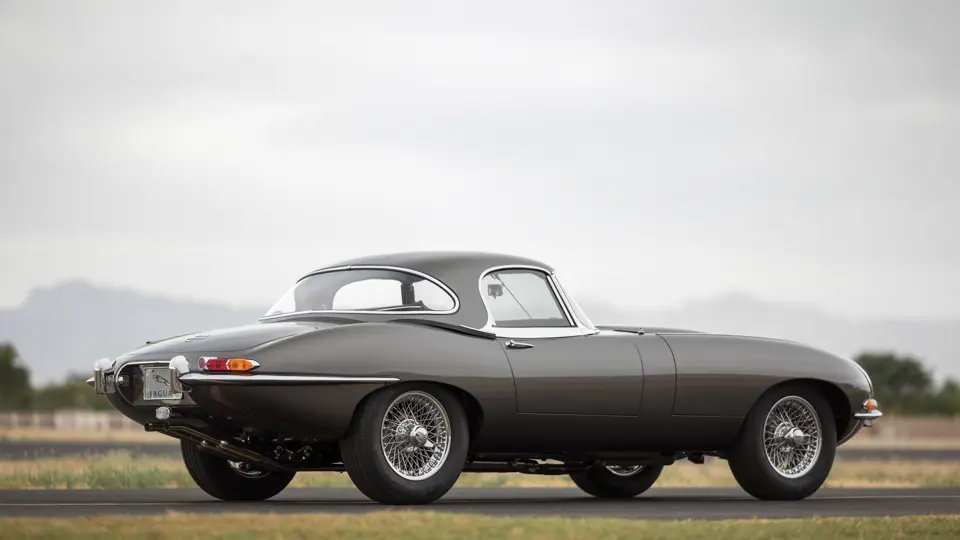



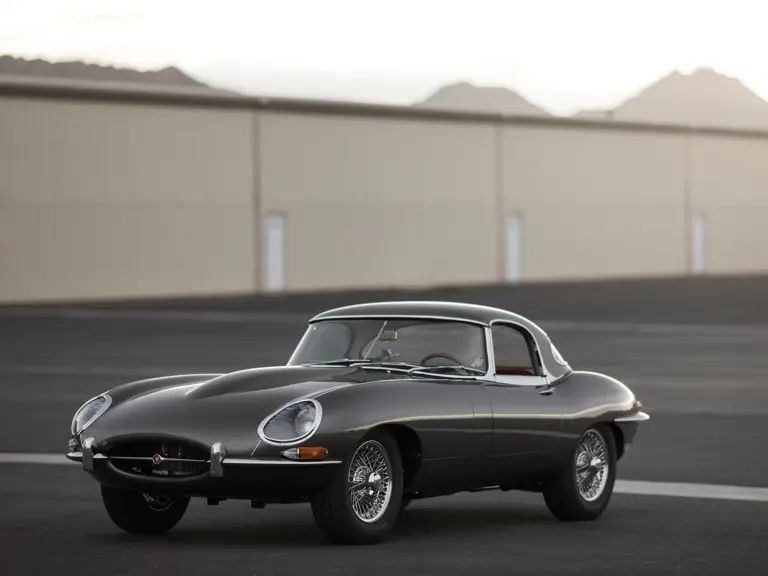

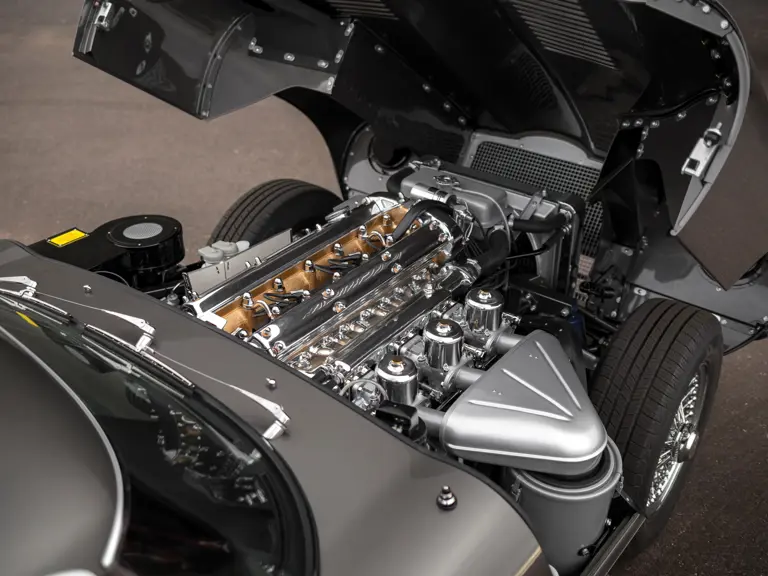
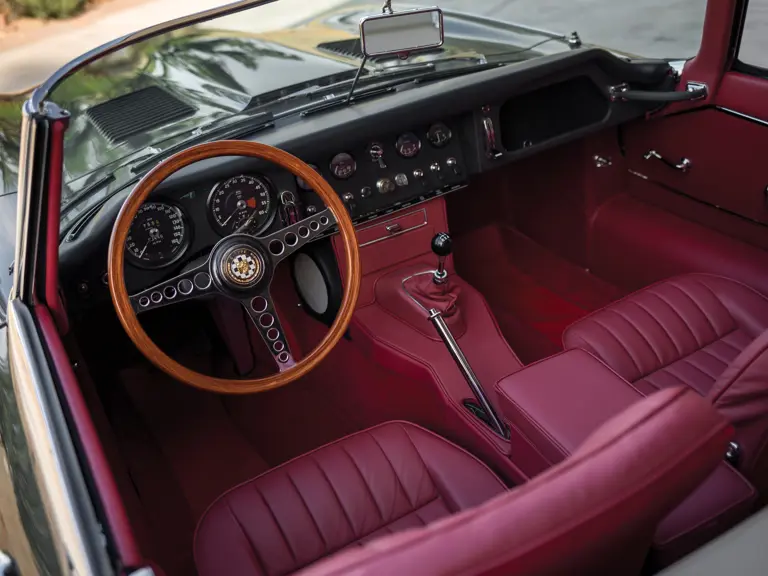
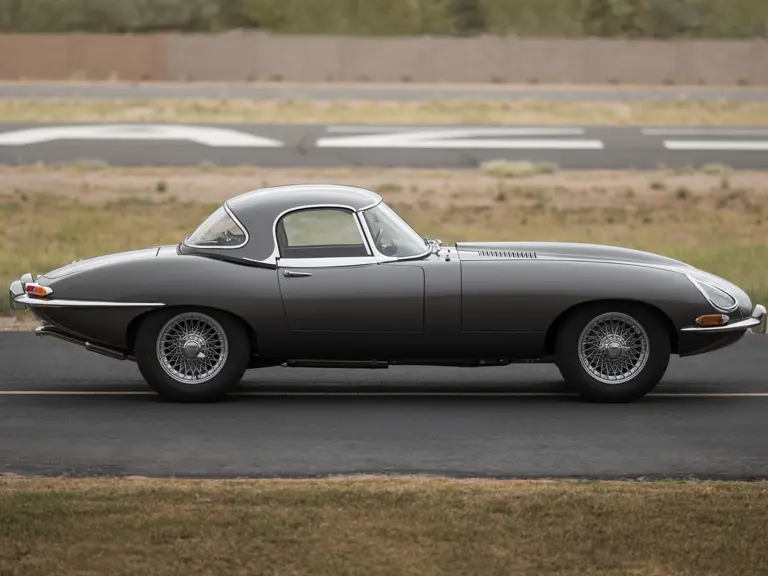
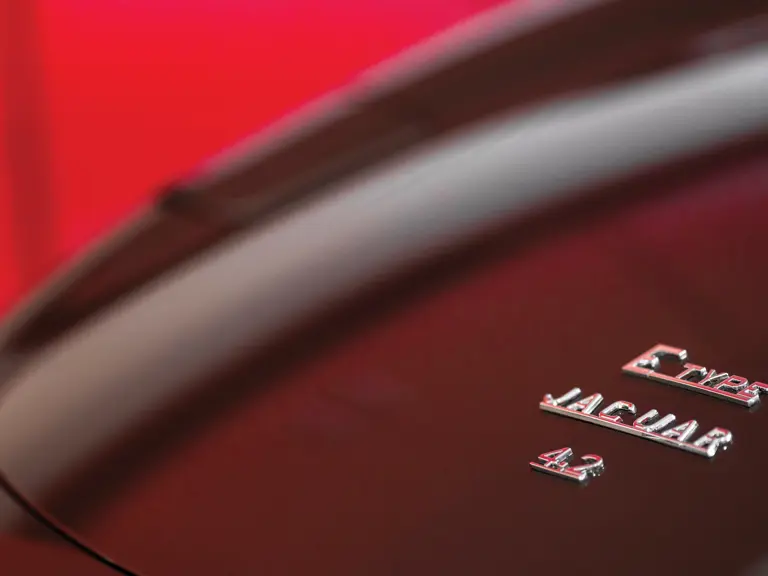
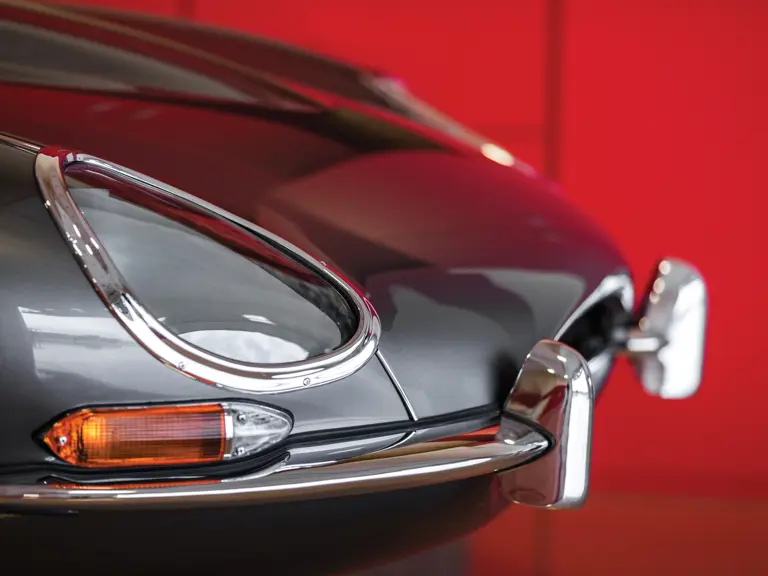

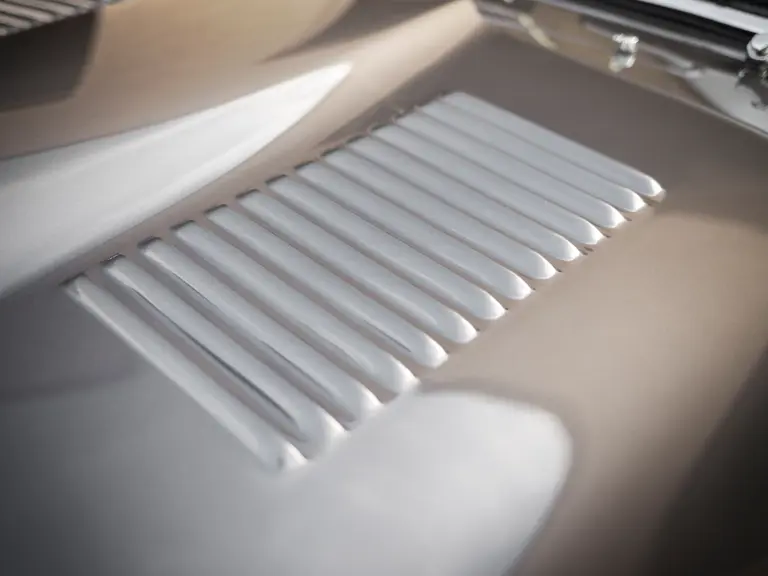
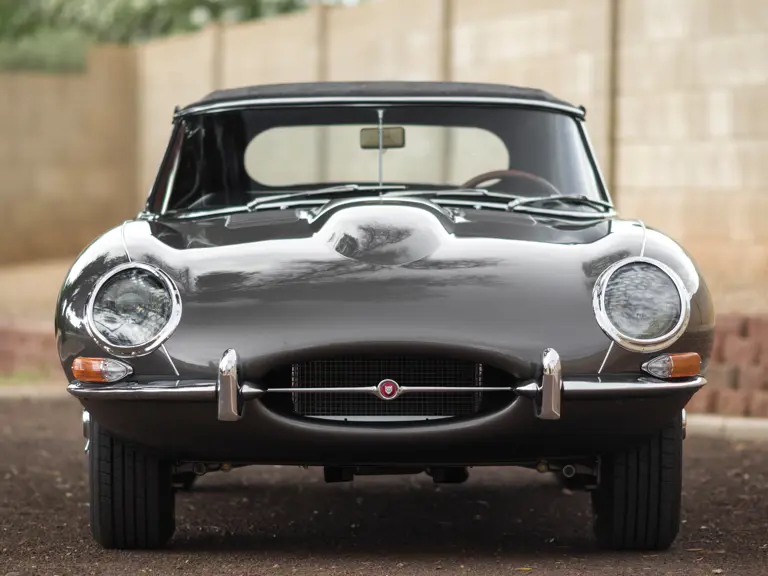
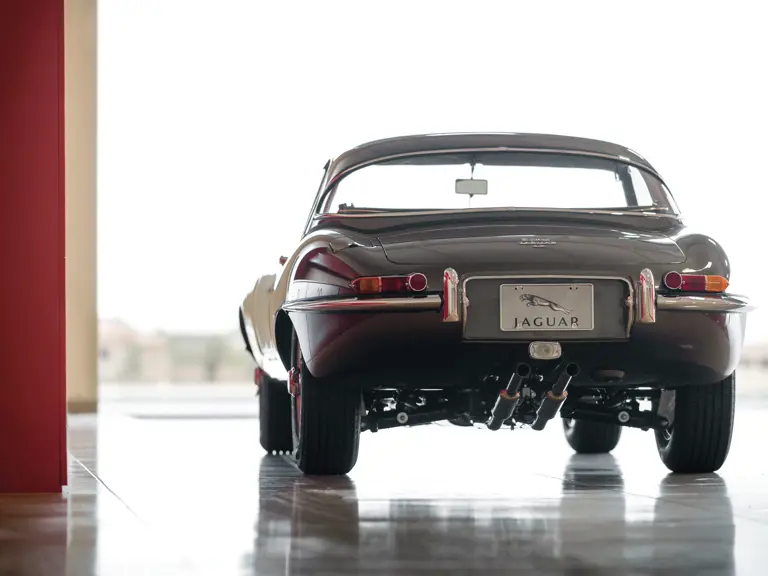


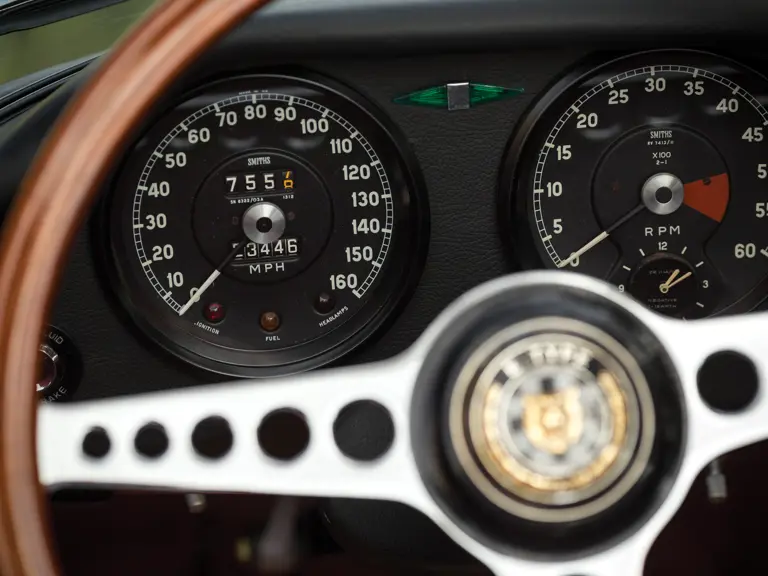
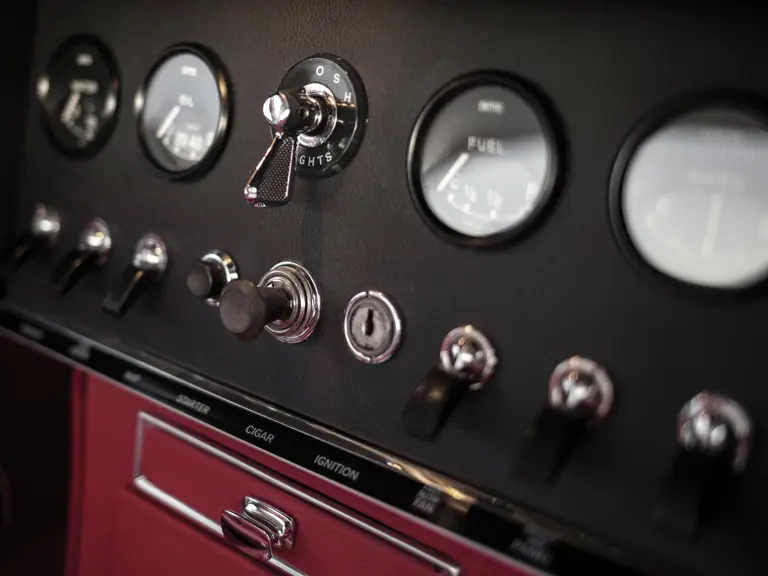
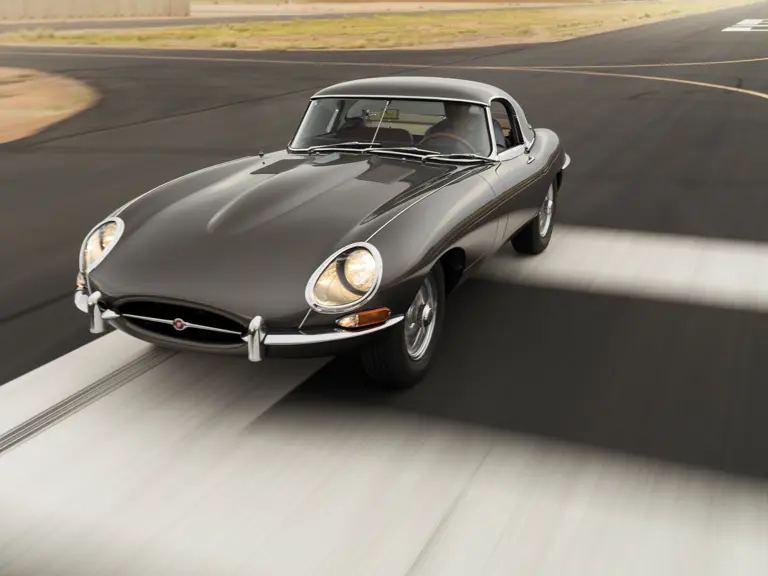

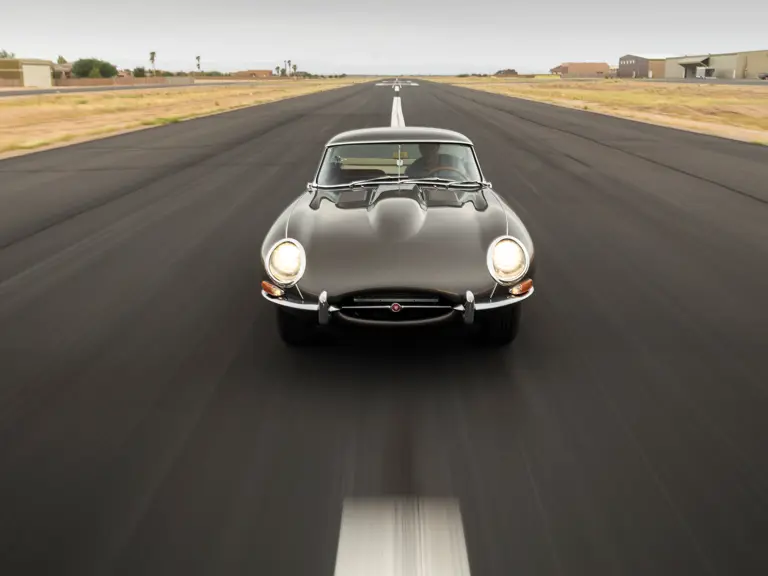
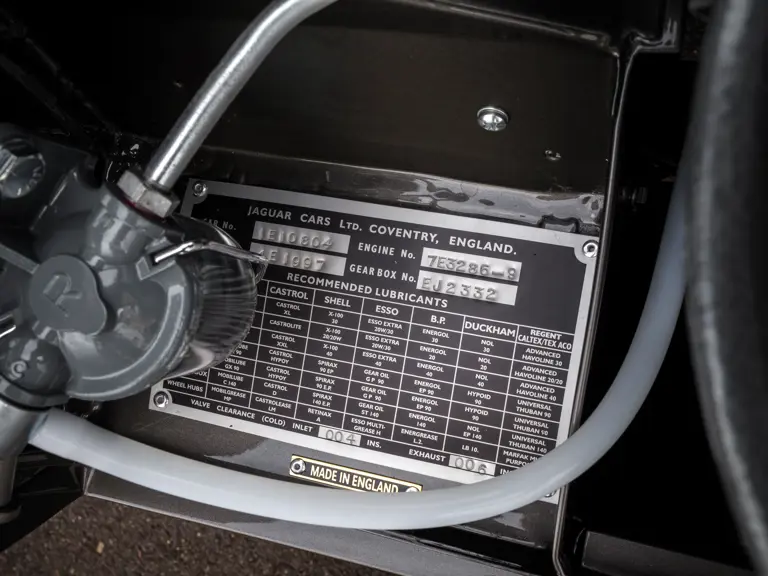

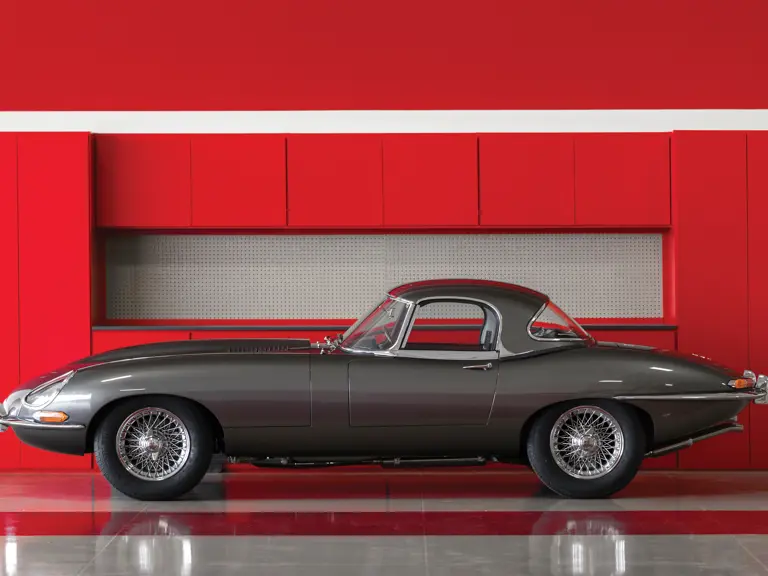
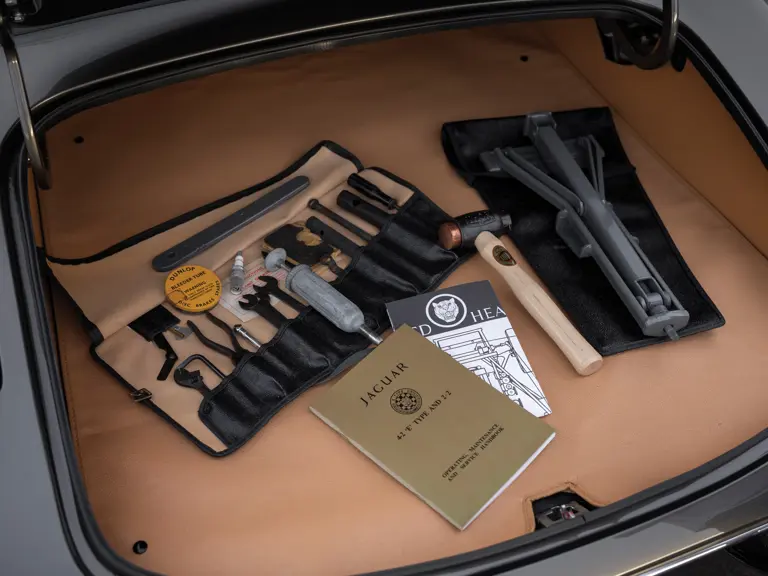
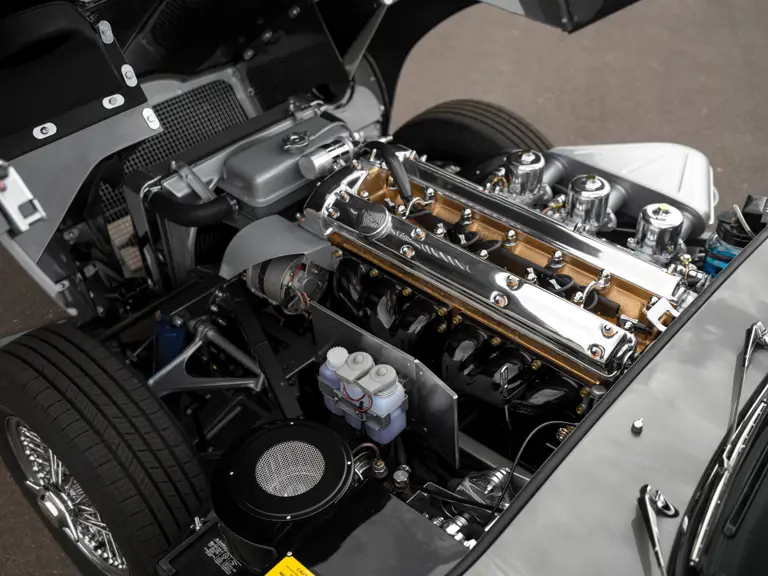

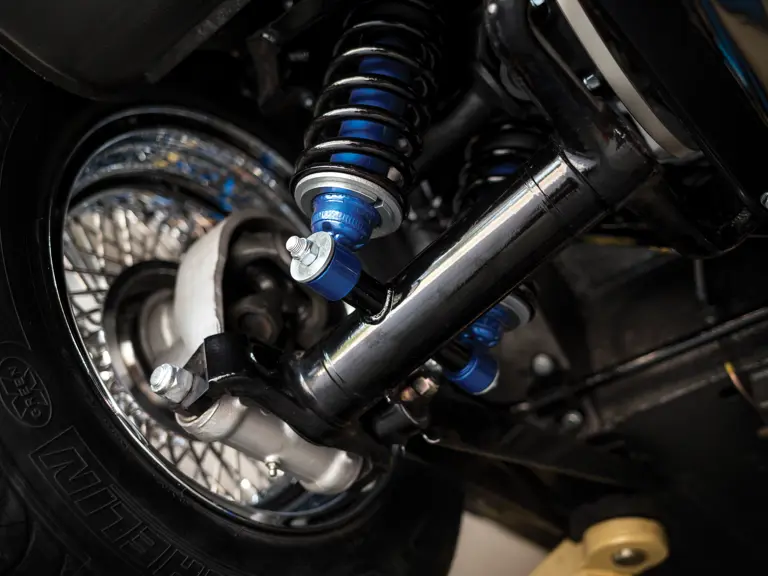

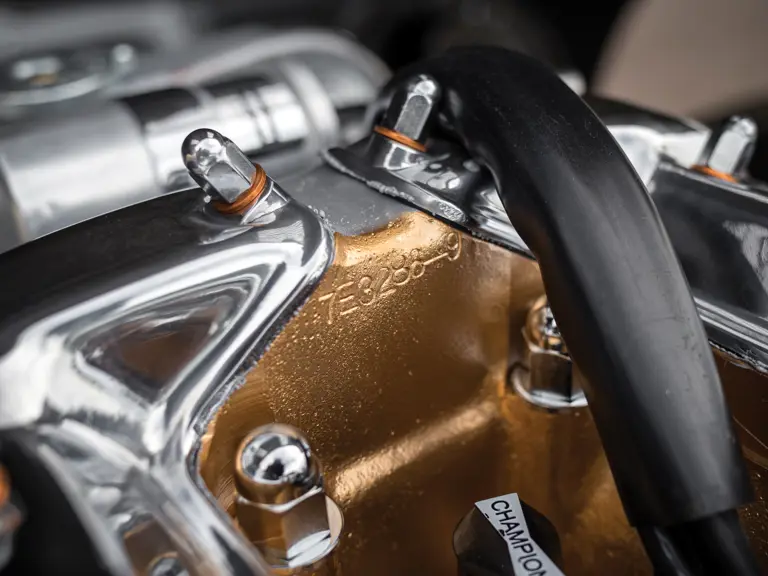



 | New York, New York
| New York, New York

